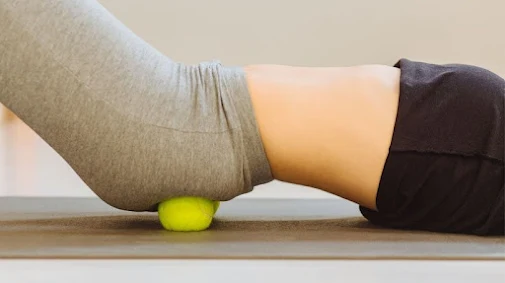How to Use Tennis Ball to Relieve Sciatic Pain and Back Pain
Sciatica is a sign of other nerve-related conditions such as a herniated disc, degenerative disc disease, or spinal canal narrowing rather than an illness or ailment in and of itself.
The usual places to feel sciatic pain are along the sciatic nerve pathway: in the lower back, buttock, back of the thigh and/or calf, on the side of the foot, and in the heel. You may also feel numbness or weakness in these areas or a strange sensation like tingling or pins and needles.
I wrote in the past a number of very popular articles on how to naturally relieve sciatic pain (you can find the links to my other articles at the end of this post). This time I want to introduce you to tennis ball therapy for sciatic nerve pain as well as back pain.
Tennis Ball Therapy for Sciatic Pain
Tennis ball therapy utilizes the principles of massage, acupressure, and reflexology which help to relieve sore muscles and muscle tension. In the case of sciatic pain, the tennis ball aims to treat the piriformis muscle which is located close to the sciatic nerve. This muscle can push the sciatic nerve against the tendons beneath it, which results in contributing to the familiar buttock and leg pain.
The tennis ball presses and treats trigger points in the piriformis muscle, reduces muscle tension and rigidity, improves mobility, and improves blood circulation to the area.
Tennis ball therapy is good not only for sciatica but also for back pain. The tennis ball acts as a massage substitute that helps reduce muscle tension and provides relief from lower back pain.
The advantage of this therapy is that it’s cheap and simple and can be done in the comfort of your home.
You must remember that most sciatic pain is a result of a spinal condition, such as herniated disk or a narrowing of the spinal canal, which causes nerve pain, so targeting the piriformis muscle is just one of the steps to relieving the sciatic pain. You still need to target the root of the problem in the spinal cord, so a consultation with a health care provider is important, as tennis ball therapy may be just one component added to physical therapy, medication, or exercise program.
If sciatica or back pain results from a pinched nerve, avoid placing the tennis ball near the pinched nerve to reduce the risk of further injury.
It’s always a good practice to talk to your doctor about your condition before you start a tennis ball therapy program to find out if there are any restrictions related to your condition.

How to do Tennis Ball Therapy for Sciatica
You can use one or more tennis balls depending on your pain level and ability to balance. While sitting or lying on the floor, place a tennis ball under your muscles where you’re experiencing the pain. If you use one ball, it will apply more pressure on the area and can cause pain from the pressure. If you use two or more balls, the pressure is spread over more balls and works more areas at once with less pain.
how to sit on a tennis ball for sciatica
Slowly shift your weight onto the ball or balls and note any areas of increased tenderness; these are the locations of your trigger points. Use a moderate amount of force to compress each painful spot for 15 to 20 seconds before you move to the next. You can also roll the ball back and forth in gentle movements.
The pain you feel from tennis should not be too strong. If the pain is too intense, adjust the ball slightly or add more balls to release direct pressure. Work gently, as too much pressure can increase the pain rather than relieve it and can aggravate the condition. If you feel sharp pain, stop, or you may damage the muscle or nerve.
If you suffer from low back pain, it’s a good idea to also release pressure in the middle and upper back.




.jpg)







